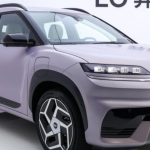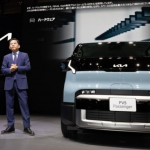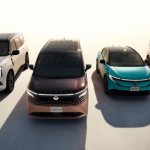In a surprising turn of events in the Indian automobile market, Mahindra & Mahindra has claimed the third spot in terms of passenger vehicle (PV) sales, surpassing Tata Motors. This significant milestone marks a shift in the industry’s competitive landscape. However, while Mahindra may have outpaced Tata Motors in sales numbers, there is a catch that industry analysts and consumers must take into consideration.
Mahindra’s Rise in the Market
Mahindra’s growth trajectory in the Indian automotive market has been nothing short of impressive. The company has successfully expanded its product lineup, focusing on SUVs—a segment that has been growing rapidly in India. Some key factors contributing to Mahindra’s rise include:
- Increased Demand for SUVs: Mahindra’s Scorpio-N, XUV700, and Thar have been major drivers of sales. The Indian market has shown a strong preference for SUVs over hatchbacks and sedans, and Mahindra has capitalized on this trend effectively.
- Better Production Management: Unlike Tata Motors, Mahindra has managed to streamline production despite semiconductor shortages. The company’s proactive approach in securing chip supplies and optimizing its manufacturing capabilities has given it an edge.
- Improved Customer Satisfaction: Mahindra has been focusing on technology, safety, and design, attracting a younger customer base. Features like ADAS (Advanced Driver Assistance Systems), premium interiors, and enhanced infotainment systems have made Mahindra vehicles more desirable.
- Aggressive Pricing and Marketing: Mahindra has competitively priced its models, making them more appealing to buyers. Strategic marketing campaigns highlighting performance, ruggedness, and cutting-edge features have strengthened its position in the market.
- Export Expansion: Mahindra has also been expanding its international presence, particularly in South Africa, Australia, and select European markets, contributing to its overall growth.
Tata Motors’ Decline – The Catch
While Mahindra has overtaken Tata Motors in terms of sales numbers, this doesn’t necessarily mean that Tata is in trouble. Several factors have contributed to this shift, which must be taken into account before drawing conclusions:
- EV Segment Growth: Tata Motors is currently the leader in the EV segment with its Nexon EV and Tiago EV. A significant portion of Tata’s focus has shifted towards electric vehicles, which are yet to match the volume of internal combustion engine (ICE) cars. However, the long-term potential of EVs remains promising.
- Production Constraints: Tata Motors has faced supply chain issues, especially with semiconductor shortages and raw material price fluctuations. This has led to delays in vehicle deliveries, affecting overall sales figures.
- Strategic Shift Towards Sustainability: Tata’s long-term vision is to establish dominance in the EV and hybrid vehicle market rather than focusing solely on volume sales. With government incentives and a growing interest in electric mobility, Tata’s investments in EV infrastructure and battery technology could yield significant results in the future.
- Mahindra’s Narrow Edge: The difference in sales numbers isn’t massive, and Tata Motors has consistently remained a strong contender. Industry experts suggest that market dynamics could shift again based on upcoming model launches and economic conditions.
- Consumer Perception and Loyalty: Tata has built a strong brand reputation for safety, with cars like the Tata Nexon and Tata Punch receiving high safety ratings. This factor continues to influence consumer choices, and a shift in demand could help Tata regain its ranking.
- Expanding Commercial Vehicle Division: Unlike Mahindra, Tata Motors also has a significant presence in the commercial vehicle segment, which sometimes affects its passenger vehicle sales focus.
Industry-Wide Trends Affecting the Competition
The Indian automobile industry is undergoing rapid transformations, influenced by multiple factors:
- Electrification of Vehicles: With government policies promoting electric vehicles, manufacturers are shifting their focus towards sustainable mobility.
- Rise of Connected Cars: Features like internet-enabled infotainment systems, remote diagnostics, and AI-powered driving assistance are becoming crucial selling points.
- Government Policies & Regulations: Changes in emission norms, taxation policies, and subsidy programs for EVs are shaping industry strategies.
- Changing Consumer Preferences: The younger generation is more inclined towards feature-rich, technology-driven, and fuel-efficient vehicles, influencing purchase decisions.
- Increased Competition from Global Brands: Companies like Hyundai, Kia, MG, and upcoming EV manufacturers are intensifying competition for both Mahindra and Tata Motors.
The Road Ahead for Mahindra & Tata
While Mahindra has taken the lead for now, the competition in the Indian automobile market remains fierce. Here’s what to expect in the coming months:
- Tata’s EV Strategy to Pay Off?: Tata Motors is betting big on EVs. If the demand for EVs continues to grow, Tata may soon reclaim its lost position. The company’s planned launch of more affordable EVs and improvements in charging infrastructure could accelerate growth.
- Mahindra’s Continued SUV Push: Mahindra will likely focus on maintaining its momentum by introducing new SUV models and enhancing its production capacity. Upcoming models like the Thar 5-door and electric versions of its popular SUVs could further boost sales.
- New Product Launches: Both brands are set to launch new models, which could tilt the scales once again. Tata’s upcoming Harrier and Safari facelifts, as well as Mahindra’s Bolero Neo Plus, are expected to be game-changers in their respective segments.
- Market Sentiments and Economic Factors: Fuel prices, inflation, and economic growth will impact purchasing power and overall automobile sales trends.
- Global Expansion Strategies: Both Mahindra and Tata are eyeing international markets. Tata Motors is exploring exports of EVs to European nations, while Mahindra is expanding in South Africa and other key regions.
Conclusion
While Mahindra’s recent success is commendable, the battle for market dominance is far from over. Tata Motors remains a formidable player with strong brand recognition and a strategic focus on sustainability. The coming months will be crucial in determining whether Mahindra can maintain its position or if Tata Motors will reclaim its lost ground.
One thing is clear: the Indian automobile industry is in an exciting phase, with innovations, electrification, and evolving consumer preferences shaping its future. Regardless of the ranking shifts, both Mahindra and Tata Motors are expected to play crucial roles in defining India’s automotive landscape in the years to come.

Hello, my name is Muskan Kumari and I am an experienced Digital Marketer. I have been blogging for the last 3 years and I have special interest in SEO. Here I give you easy bikes and writes easy-to-understand reviews and news about the latest bikes, helping readers choose the best options.. My aim is to always provide you with accurate, new and useful information.










